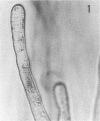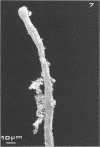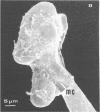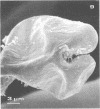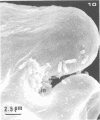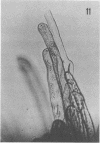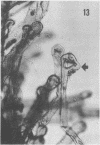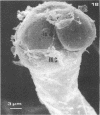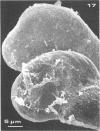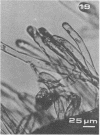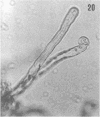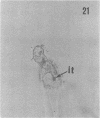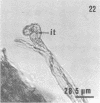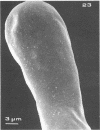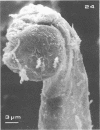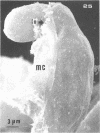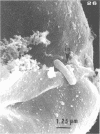Abstract
The lima bean (Phaseolus lunatus L.) and the pole bean (Phaseolus vulgaris L.) are nodulated by rhizobia of two different cross-inoculation groups. Rhizobium sp. 127E15, a cowpea-type Rhizobium, can induce effective nodules on the lima bean and partially effective nodules on the pole bean. Rhizobium phaseoli 127K14 can induce effective nodules on the pole bean but does not reciprocally nodulate the lima bean. Root hairs of the lima bean when inoculated with Rhizobium sp. 127E15 showed tip curling and swelling and infection thread formation as observed by light microscopy and scanning electron microscopy. When lima bean root hairs were inoculated with R. phaseoli 127K14, no host-specific responses were observed. Pole bean root hairs that had been inoculated with R. phaseoli 127K14 or Rhizobium sp. 127E15 also showed tip curling and swelling and infection thread formation. Colonization of lima bean root hairs by Rhizobium sp. 127E15 and pole bean root hairs by R. phaseoli 127K14 or Rhizobium sp. 127E15 appeared to involve the elaboration of microfibrils. This study showed that when Rhizobium sp. 127E15 nodulates a host of a different cross-inoculation group, it elicits the same specific host responses as it does from a host of the same cross-inoculation group.
Full text
PDF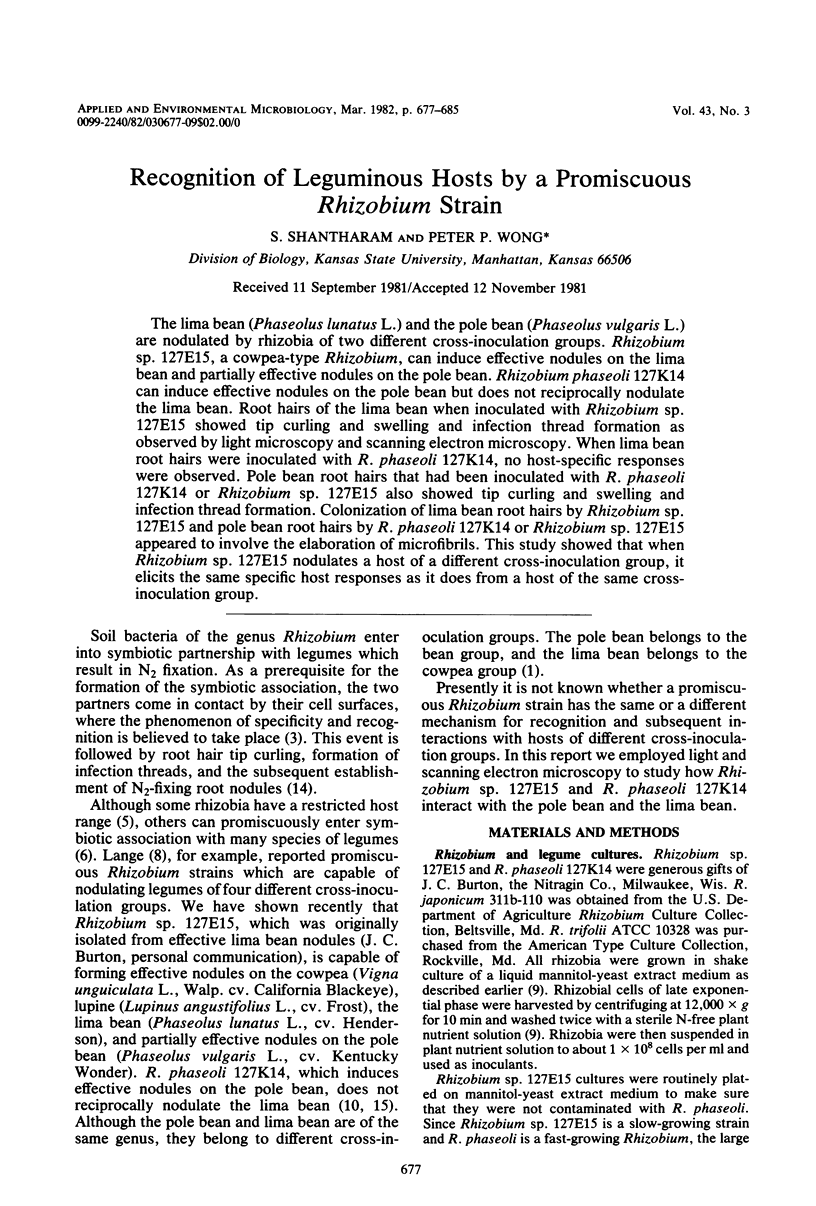
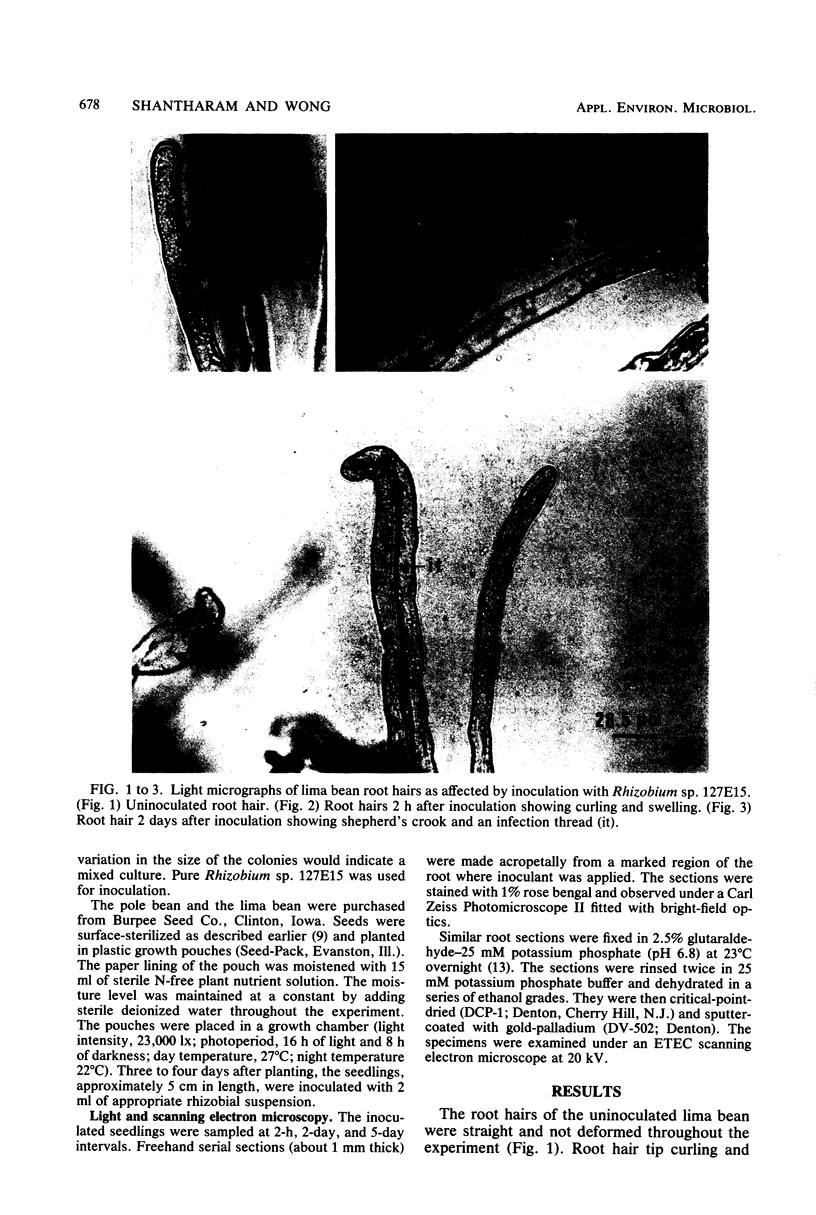
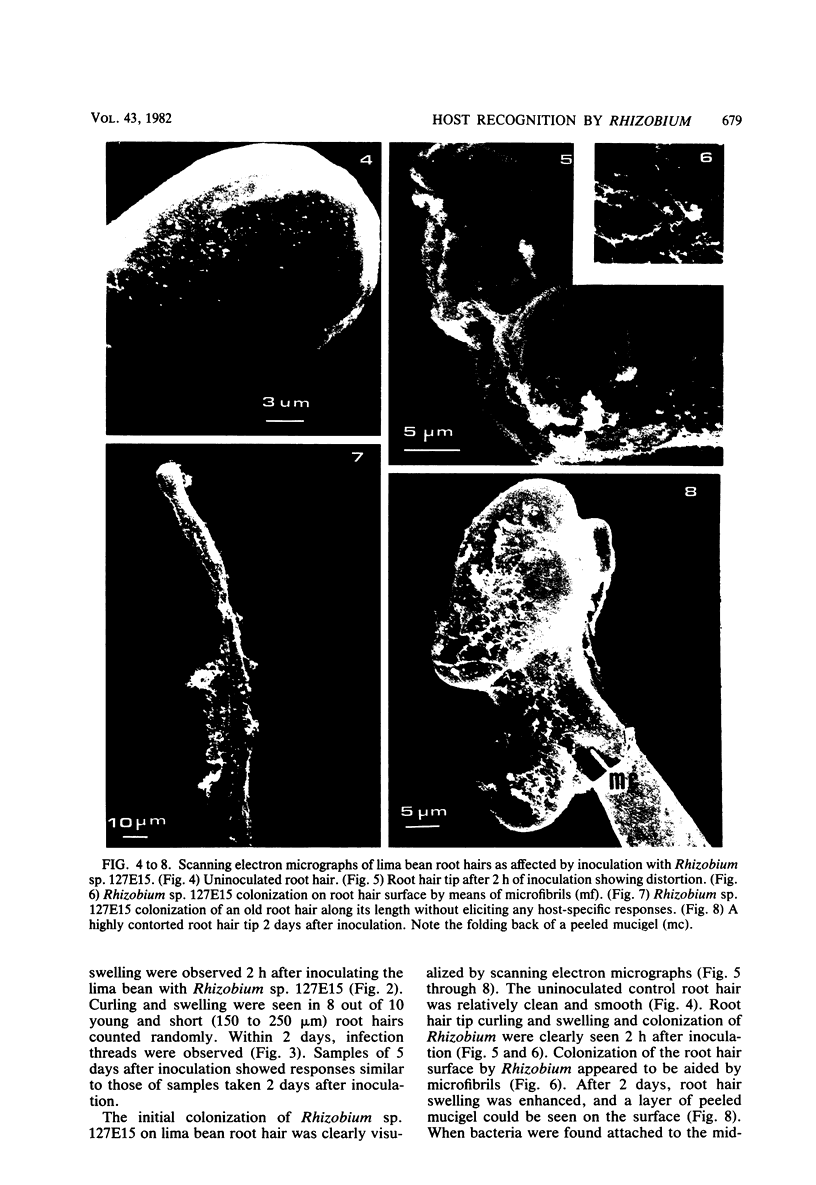

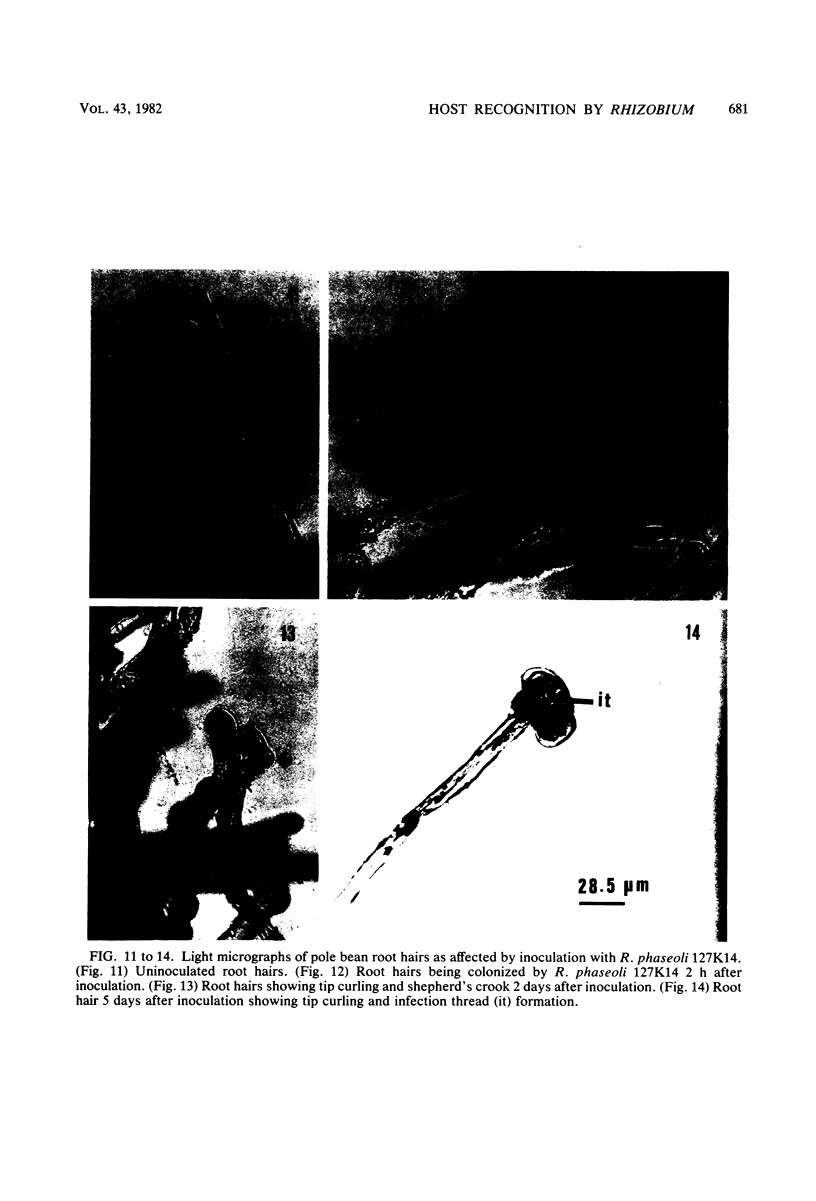
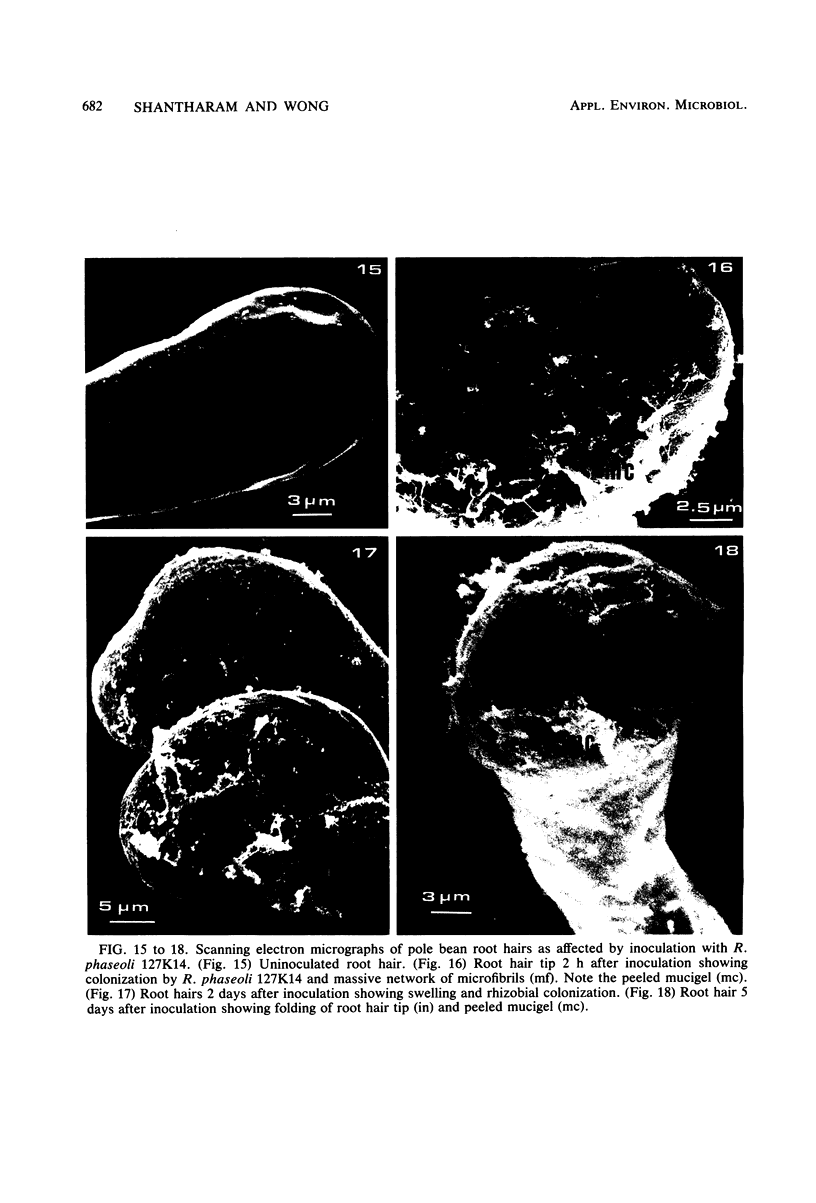
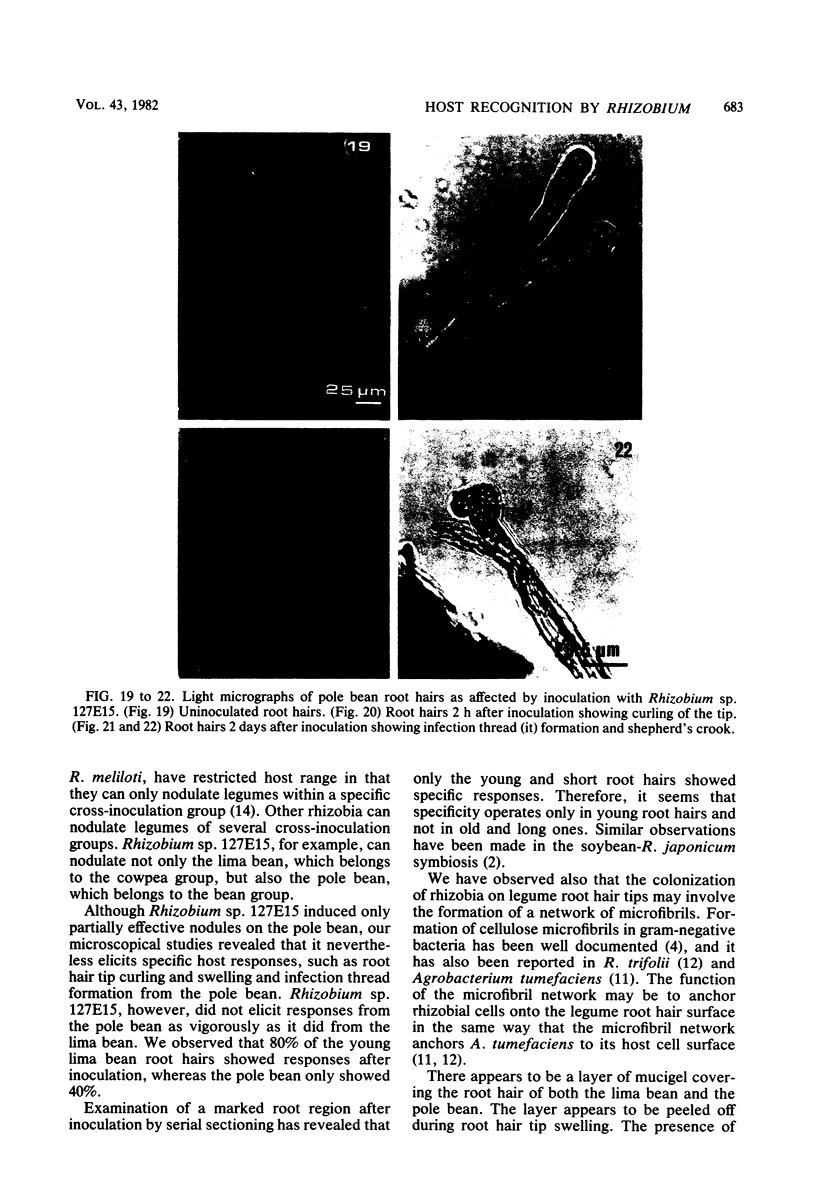
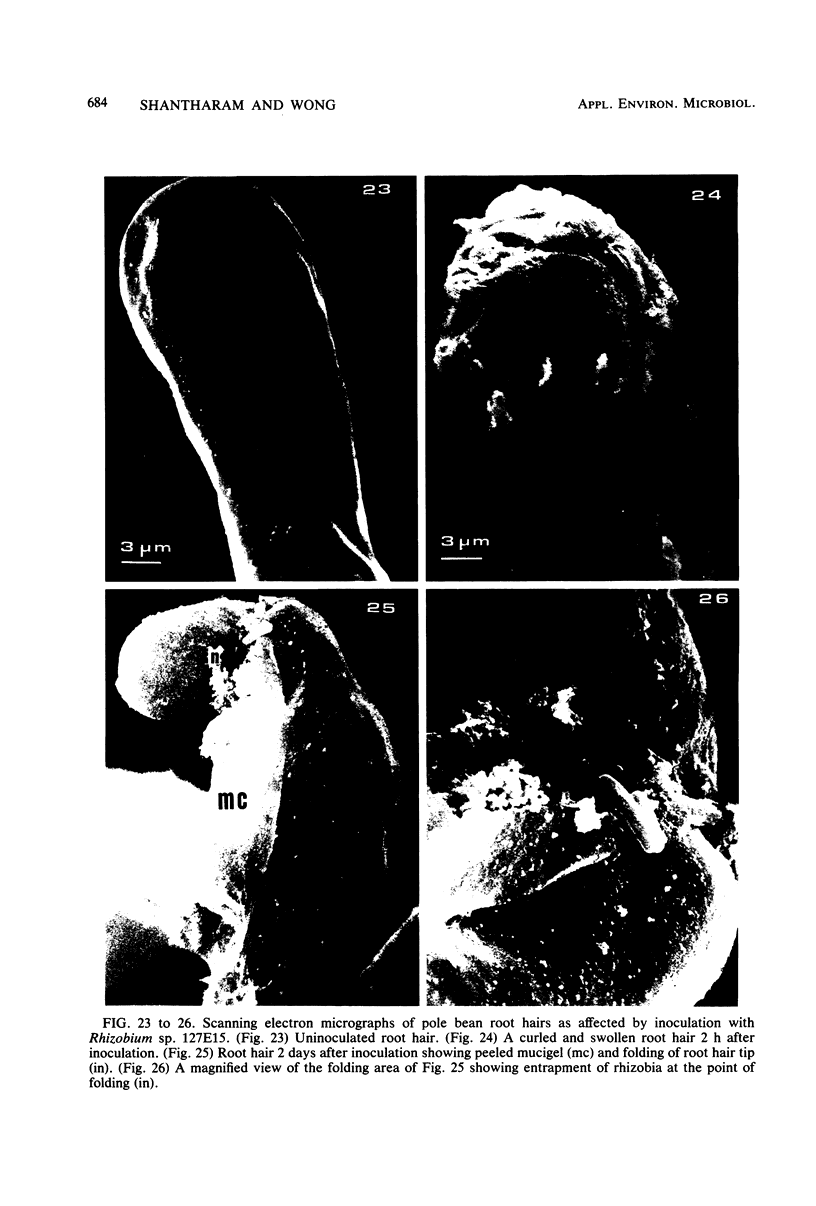
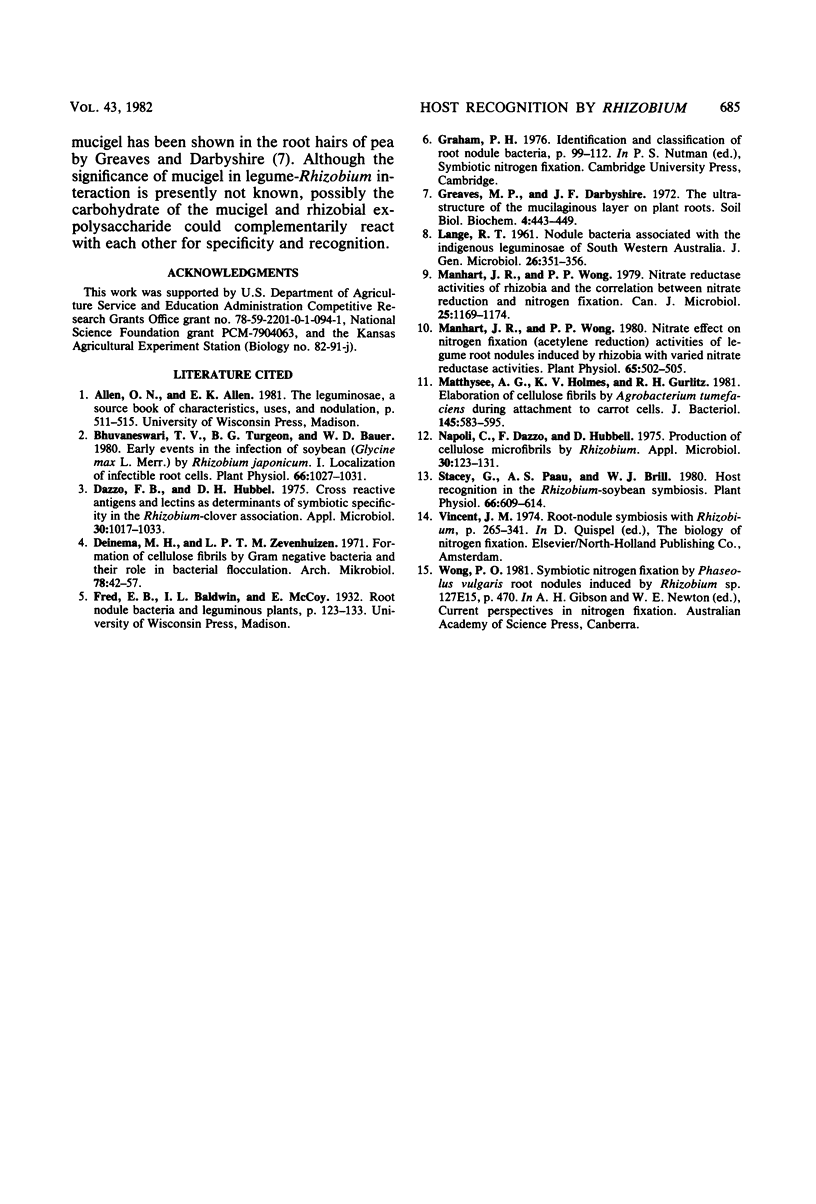
Images in this article
Selected References
These references are in PubMed. This may not be the complete list of references from this article.
- Bhuvaneswari T. V., Turgeon B. G., Bauer W. D. Early Events in the Infection of Soybean (Glycine max L. Merr) by Rhizobium japonicum: I. LOCALIZATION OF INFECTIBLE ROOT CELLS. Plant Physiol. 1980 Dec;66(6):1027–1031. doi: 10.1104/pp.66.6.1027. [DOI] [PMC free article] [PubMed] [Google Scholar]
- Dazzo F. B., Hubbell D. H. Cross-reactive antigens and lectin as determinants of symbiotic specificity in the Rhizobium-clover association. Appl Microbiol. 1975 Dec;30(6):1017–1033. doi: 10.1128/am.30.6.1017-1033.1975. [DOI] [PMC free article] [PubMed] [Google Scholar]
- Deinema M. H., Zevenhuizen L. P. Formation of cellulose fibrils by gram-negative bacteria and their role in bacterial flocculation. Arch Mikrobiol. 1971;78(1):42–51. doi: 10.1007/BF00409087. [DOI] [PubMed] [Google Scholar]
- LANGE R. T. Nodule bacteria associated with the indigenous leguminosae of South-Western Australia. J Gen Microbiol. 1961 Oct;26:351–359. doi: 10.1099/00221287-26-2-351. [DOI] [PubMed] [Google Scholar]
- Manhart J. R., Wong P. P. Nitrate Effect on Nitrogen Fixation (Acetylene Reduction): ACTIVITIES OF LEGUME ROOT NODULES INDUCED BY RHIZOBIA WITH VARIED NITRATE REDUCTASE ACTIVITIES. Plant Physiol. 1980 Mar;65(3):502–505. doi: 10.1104/pp.65.3.502. [DOI] [PMC free article] [PubMed] [Google Scholar]
- Manhart J. R., Wong P. P. Nitrate reductase activities of rhizobia and the correlation between nitrate reduction and nitrogen fixation. Can J Microbiol. 1979 Oct;25(10):1169–1174. doi: 10.1139/m79-181. [DOI] [PubMed] [Google Scholar]
- Matthysse A. G., Holmes K. V., Gurlitz R. H. Elaboration of cellulose fibrils by Agrobacterium tumefaciens during attachment to carrot cells. J Bacteriol. 1981 Jan;145(1):583–595. doi: 10.1128/jb.145.1.583-595.1981. [DOI] [PMC free article] [PubMed] [Google Scholar]
- Napoli C., Dazzo F., Hubbell D. Production of cellulose microfibrils by Rhizobium. Appl Microbiol. 1975 Jul;30(1):123–131. doi: 10.1128/am.30.1.123-131.1975. [DOI] [PMC free article] [PubMed] [Google Scholar]
- Stacey G., Paau A. S., Brill W. J. Host recognition in the Rhizobium-soybean symbiosis. Plant Physiol. 1980 Oct;66(4):609–614. doi: 10.1104/pp.66.4.609. [DOI] [PMC free article] [PubMed] [Google Scholar]




